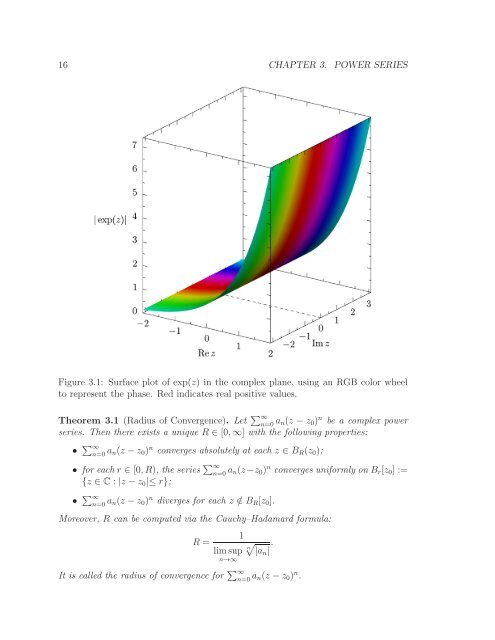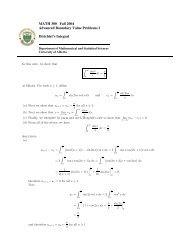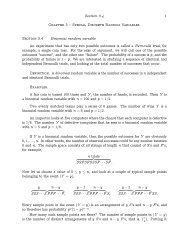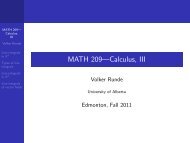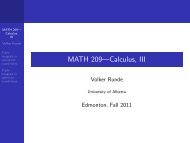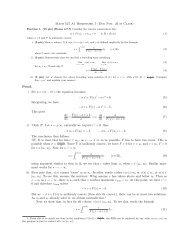Math 411: Honours Complex Variables - University of Alberta
Math 411: Honours Complex Variables - University of Alberta
Math 411: Honours Complex Variables - University of Alberta
Create successful ePaper yourself
Turn your PDF publications into a flip-book with our unique Google optimized e-Paper software.
16 CHAPTER 3. POWER SERIES<br />
Figure 3.1: Surface plot <strong>of</strong> exp(z) in the complex plane, using an RGB color wheel<br />
to represent the phase. Red indicates real positive values.<br />
Theorem 3.1 (Radius <strong>of</strong> Convergence). Let � ∞<br />
n=0 an(z − z0) n be a complex power<br />
series. Then there exists a unique R ∈ [0,∞] with the following properties:<br />
• � ∞<br />
n=0 an(z −z0) n converges absolutely at each z ∈ BR(z0);<br />
• for each r ∈ [0,R), the series � ∞<br />
n=0 an(z−z0) n converges uniformly on Br[z0] :=<br />
{z ∈ C : |z −z0|≤ r};<br />
• � ∞<br />
n=0 an(z −z0) n diverges for each z /∈ BR[z0].<br />
Moreover, R can be computed via the Cauchy–Hadamard formula:<br />
R =<br />
1<br />
�<br />
n<br />
limsup |an|<br />
n→∞<br />
.<br />
It is called the radius <strong>of</strong> convergence for � ∞<br />
n=0 an(z −z0) n .


